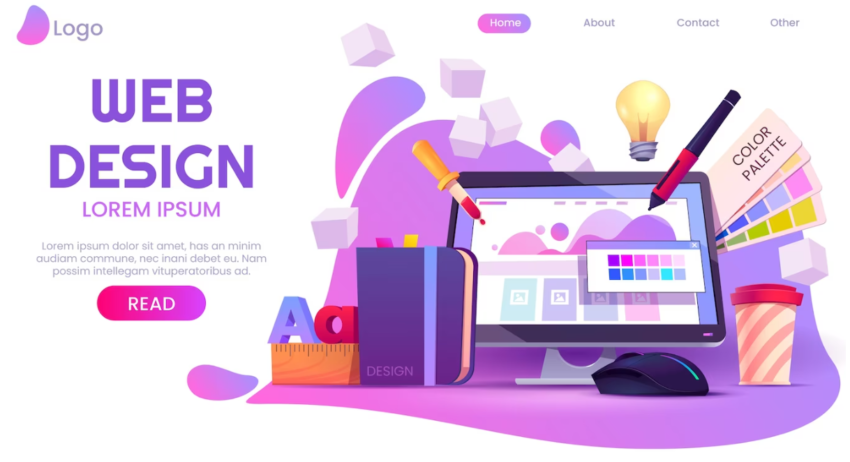How Web Design Enhances Brand Identity Online

Websites nowadays are more than simply online shops; they are multipurpose. It is a pivotal component of its brand identity and a crucial touchpoint for engaging with its audience. Effective web design goes beyond aesthetics; it shapes how users perceive a brand, interact with its content, and ultimately decide to engage with its products or services. This article delves into the principles, tactics, and real-world examples that show how web design improves brand identification online. It analyzes all the ways in which web design may do this.
Grasping The Concept Of Brand Identity And How It Exhibits Online
Before diving into the specifics of web design’s influence, it’s essential to grasp the concept of brand identity. The brand identity encompasses the visual elements, messaging, values, and personality that define a company and distinguish it from competitors. It is the essence of what a brand stands for and how it communicates its story to the world.
In the online, brand identity manifests primarily through a company’s website. This digital platform serves as a direct representation of the brand’s identity, offering a curated experience that shapes user perceptions and influences their behaviors. A well-crafted website not only conveys information but also evokes emotions, builds trust, and fosters meaningful connections with visitors.
The Role Of Web Design In Shaping Brand Identity
When it comes to building a brand’s online reputation, web design is crucial. It consists of multiple parts that complement one another to produce an integrated and effective user experience. These elements include:
Visual Branding:
The visual aesthetics of a website—such as colors, typography, imagery, and layout—mirror the brand’s identity. Consistent use of brand colors and fonts reinforces brand recognition and strengthens visual cohesion across all digital touchpoints.
User Interface (Ui) Design:
The goal of user interface design is to make interacting with a website easy and natural for the user. It ensures that navigation is straightforward, information is easily accessible, and actions are clear and com telling. A well-designed UI enhances usability, which is crucial for retaining visitors and guiding them toward desired actions.
User Experience (Ux) Design:
UX design emphasizes understanding user behaviors and preferences to optimize the overall experience. It involves conducting research, creating user personas, mapping user journeys, and iterating based on f feedback. A positive UX enhances satisfaction and encourages visitors to return, reinforcing brand loyalty.
Responsive Design:
Websites now need to be responsive, meaning they can change their layout to fit various screen sizes due to the proliferation of mobile devices. Not only does this kind of design make a product more accessible, but it also shows that the business cares about making sure that all of its products are easy to use.
Content Strategy:
Effective web design integrates content—such as text, images, videos, and interactive elements—in a way that aligns with the brand s voice and values. Compelling storytelling through content engages visitors on an emotional level, fostering connections and deepening brand affinity.
Strategies For Enhancing Brand Identity Through Web Design
By meticulously applying principles of user experience and visual branding, a Denver web design company can effectively enhance a client’s brand identity online, ensuring consistency and engaging user interactions. Internet marketing success necessitates forethought that takes into account the brand’s values, objectives and intended audience. Here are key strategies to consider:
Define Brand Guidelines:
Establish clear brand guidelines that dictate visual elements, tone of voice, and style preferences. Consistency across all design assets—from logos to website layouts—reinforces brand recognition and builds trust.
Audience-Centric Design:
Conduct research to understand your target audience’s preferences, behaviors, and pain points. Tailor your design elements, content strategy, and user experience to resonate with their needs and aspirations.
Storytelling Through Design:
Use visual storytelling techniques—such as compelling imagery, videos, and animations—to convey your brand’s narrative and evoke emotional connections. Craft a cohesive storyline that aligns with your brand values and resonates with your audience.
Iterative Design Process:
Implement an iterative strategy for design that incorporates ongoing testing, feedback collection, and optimization. Keep an eye on metrics that measure user engagement, test for usability, and make changes to make the user experience better overall.
Integrate Brand Personality:
Infuse your brand’s personality and values into every design decision. Whether through color choices, typography, or interactive elements, ensure that each design element reflects and reinforces the essence of your brand.
Conclusion
Finally, developing a website is more than just a technical task; it’s a potent instrument for strengthening online brand recognition. Brands can build digit al experiences that connect with their audience on an emotional level, encourage meaningful engagement, and leverage user interface design, user experience principles, and captivating content to great effect. Web design’s impact on c eating a memorable brand identity will remain critical to establishing long-term connections with customers and propelling companies forward in the digital era, even as technology advances and customer expectations change.



